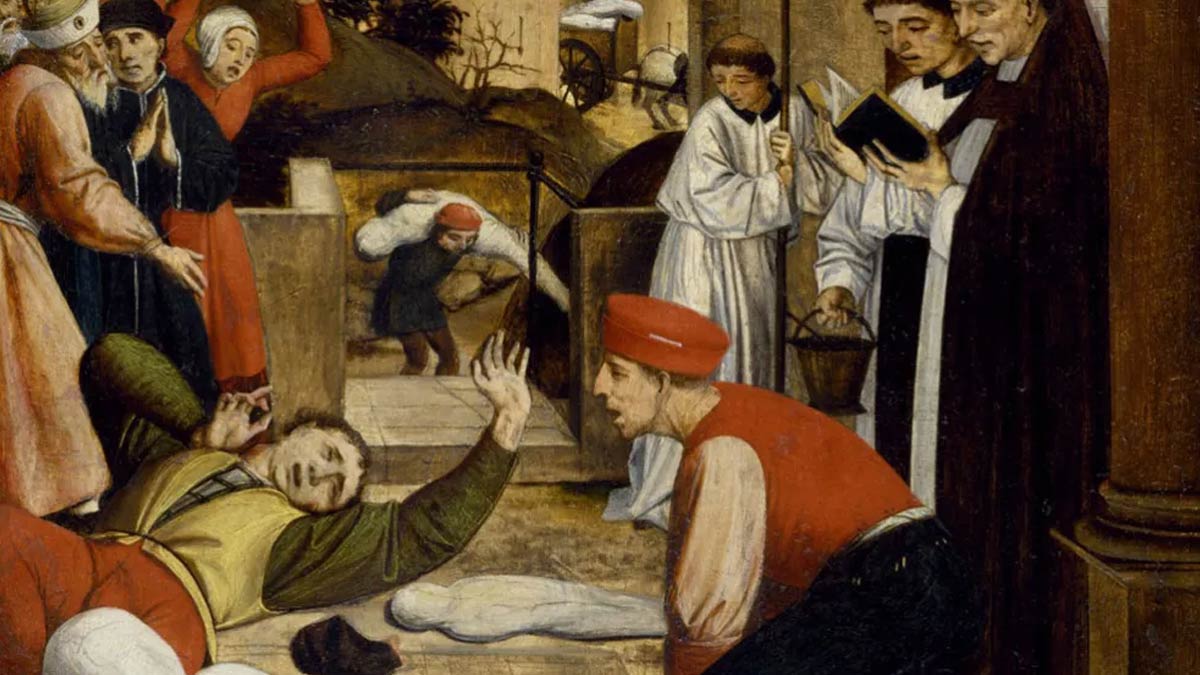
The recent emergence of bubonic plague in central Oregon has sparked concerns and raised questions about this ancient yet formidable disease. As we navigate the resurgence of this deadly ailment, it becomes imperative to arm ourselves with knowledge regarding its nature, symptoms, treatment, and prevention strategies.
Table of Content:-
Understanding Bubonic Plague
Bubonic plague, caused by the bacterium Yersinia pestis, is an infectious disease primarily transmitted through flea bites. Characterised by the formation of swollen lymph nodes known as buboes, bubonic plague earned notoriety during the medieval era, claiming millions of lives in Europe and earning the moniker "Black Death." While less prevalent today, bubonic plague persists in certain regions worldwide, including the western United States.

Symptoms and Types
As per Dr RR Dutta, HOD Internal Medicine, Paras Health, Gurugram, bubonic plague manifests with abrupt onset fever, chills, and excruciating pains in the abdomen, limbs, and head. The hallmark buboes, swollen lymph nodes resembling eggs and prone to oozing pus, distinguish bubonic plague from other variants such as septicemic and pneumonic plague. Septicemic plague disseminates throughout the body, often resulting in gangrene and unusual bleeding, while pneumonic plague affects the lungs, leading to respiratory distress and hemoptysis.
Also Read: Park Seo Joon’s Workout Routine: Here Are The Secrets Behind The K-Drama Star’s Sculpted Body
Historical Significance and Global Occurrence
The spectre of bubonic plague looms large in history, with the Black Death pandemic of the 14th century decimating populations across Europe. Despite advancements in medical science, bubonic plague persists in pockets worldwide, with sporadic outbreaks occurring in Africa, Asia, South America, and North America. In the United States, bubonic plague cases cluster in specific regions, notably Northern New Mexico, Arizona, Colorado, California, Oregon, and Nevada.
Transmission and Risk Factors
Bubonic plague transmission occurs primarily through flea bites on rodents and other animals, with humans serving as incidental hosts. Cats, particularly susceptible to plague, can contract the disease from ingesting infected rodents and transmit the bacterium to humans through droplets. While person-to-person transmission is rare, cases of pneumonic plague can disseminate via respiratory droplets, necessitating stringent infection control measures.
Diagnosis and Management
Diagnosing bubonic plague entails laboratory tests on blood or tissue samples to detect the presence of Yersinia pestis. Prompt initiation of antibiotic therapy, including ciprofloxacin, gentamicin, or doxycycline, is crucial for favourable outcomes. Hospitalisation and isolation may be warranted to prevent disease spread and facilitate intensive supportive care.
Preventive Measures
Preventing bubonic plague hinges on comprehensive rodent control measures, flea eradication strategies, and vigilant pet care practices. Minimizing rodent habitats, employing flea control products for pets, and avoiding direct contact with sick or dead animals are paramount for mitigating plague transmission. Additionally, utilising insect repellents in endemic areas and practising personal hygiene are essential preventive measures.
Bottomline
Bubonic plague's resurgence underscores the persistent threat posed by ancient diseases in modern times. By fostering awareness, implementing stringent preventive measures, and facilitating timely diagnosis and treatment, we can mitigate the impact of bubonic plague and safeguard public health. As we navigate the complexities of infectious diseases, collective vigilance, and proactive measures remain indispensable in combating emerging health challenges and preserving well-being.
How we keep this article up to date:
We work with experts and keep a close eye on the latest in health and wellness. Whenever there is a new research or helpful information, we update our articles with accurate and useful advice.
Current Version